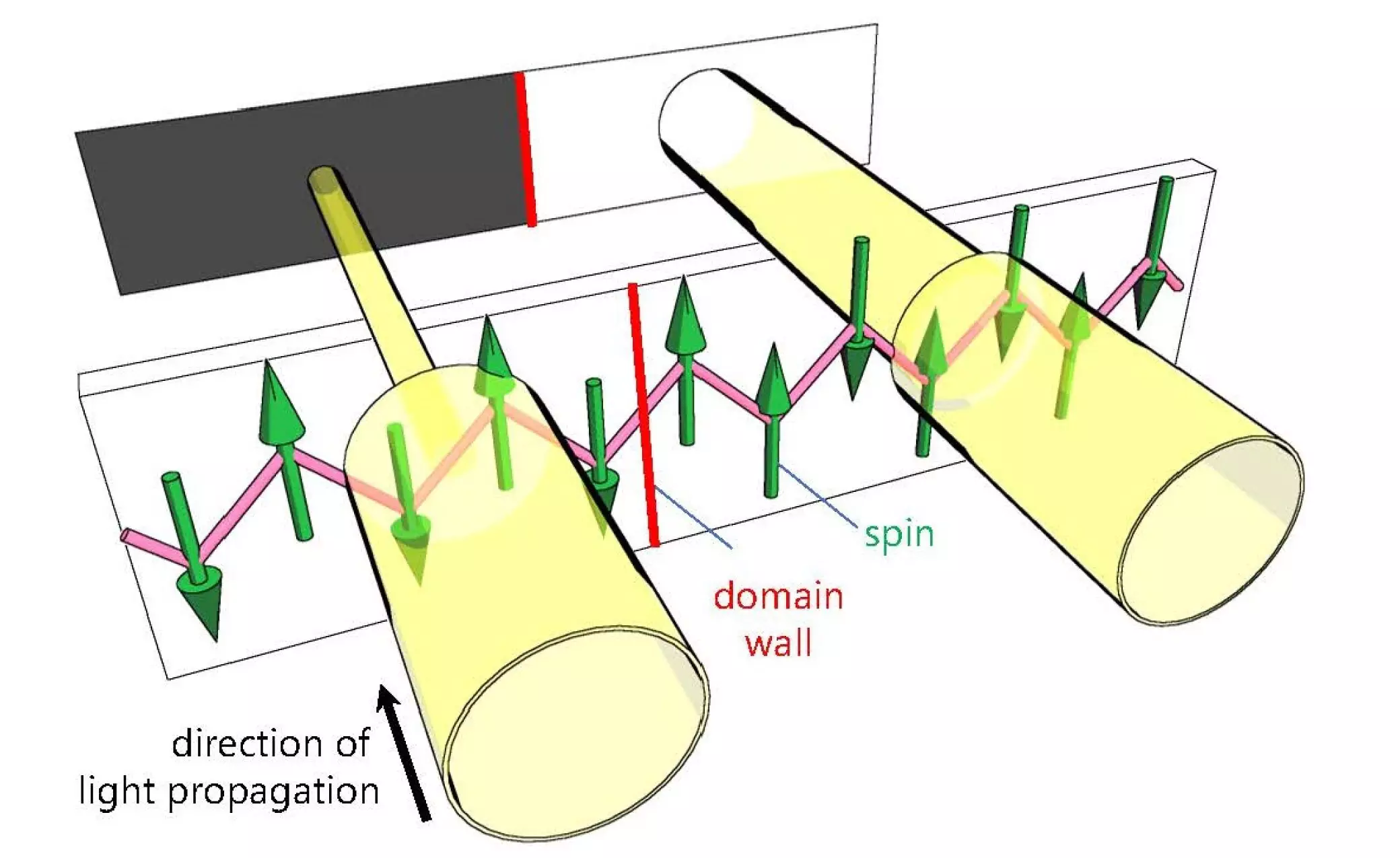As the realms of physics and engineering progress, researchers continue to peel back the layers of complexity surrounding unconventional magnetic materials. A recent breakthrough by a collaborative team from Osaka Metropolitan University and the University of Tokyo has shed light on the often elusive properties of antiferromagnets. These magnetic materials—characterized by their unique ability to align spins in opposing directions—have garnered significant attention due to their potential applications in advanced electronics and memory devices.
Published in the peer-reviewed journal Physical Review Letters, the study illuminates how light can be utilized to visualize and manipulate small-scale magnetic regions known as magnetic domains within a quasi-one-dimensional antiferromagnet called BaCu2Si2O7. The innovative approach adopted by the researchers is set to provide fresh insights into the quantum behaviors of these materials, which could revolutionize how we approach the development of future technological applications.
Antiferromagnets differ fundamentally from their ferromagnetic counterparts. Instead of displaying distinct magnetic poles, antiferromagnets offer a cancellation of internal magnetic fields, resulting in neutral net magnetism. Their mechanical properties make them intriguing subjects for scientific inquiry, particularly when focused on materials composed of atomic chains that demonstrate quasi-one-dimensional quantum characteristics. Claims surrounding the suitability of such materials for next-generation electronics have heightened their study across various technological domains.
Unfortunately, the intricate nature of antiferromagnetic materials presents significant observation challenges. Magnetic domains, which are tiny regions where atomic spins align uniformly, commonly exist within these materials. However, capturing them has been problematic due to low magnetic transition temperatures and minimal magnetic moments. Kenta Kimura, an associate professor and lead author of the study, articulates the complexity involved, emphasizing the difficulty of observing magnetic domains in these unique materials.
To overcome observational barriers, the researchers incorporated a novel technique involving nonreciprocal directional dichroism. This method exploits the fact that the light absorption properties of certain materials can change based on the direction of incident light or the magnetic moments of the material itself. Through this innovation, the research team was able to visualize magnetic domains and discern their arrangements within BaCu2Si2O7 for the first time. This pivotal moment highlights the coexistence of opposite domains within a single crystal and the organized configuration of their domain walls along atomic chains.
“I am thrilled we could visualize the magnetic domains of these quantum antiferromagnets using a simple optical microscope,” expressed Kimura, emphasizing the significance of direct observation in the study of quantum materials. Direct visualization offers a new path for understanding the complexities of magnetic behavior at a quantum level.
In an exciting turn of events, the research team also demonstrated that these domain walls could be manipulated using an electric field, thanks to a phenomenon known as magnetoelectric coupling. This connection between magnetic and electric properties allowed the scientists to achieve controlled movement of the domain walls—an advancement that could have lasting implications for electronic component design.
The simplicity and speed of the optical microscopy method herald new opportunities for real-time visualization, indicating the potential for monitoring the dynamic behavior of magnetic domains as they shift and interact. This capability opens doors to appreciating the underlying mechanisms that govern quantum fluctuations within antiferromagnetic materials.
This groundbreaking study not only enhances our understanding of quantum materials but also propels the field towards innovative technological applications. Antiferromagnets, once relegated to the sidelines, are now being reexamined through a more functional lens. As Kimura notes, the possibility of applying the new observational techniques to various quasi-one-dimensional quantum antiferromagnets could yield vital insights into the relationship between quantum fluctuations and domain behavior.
As researchers delve into the intricacies of these materials, we stand on the cusp of a new era in quantum technologies. The path illuminated by this research underscores the potential of antiferromagnetic materials, inviting further exploration and innovation that could ultimately lead to groundbreaking advancements in electronics and beyond. The journey into the quantum realm is only just beginning, and the possibilities may be as boundless as our curiosity.


Leave a Reply